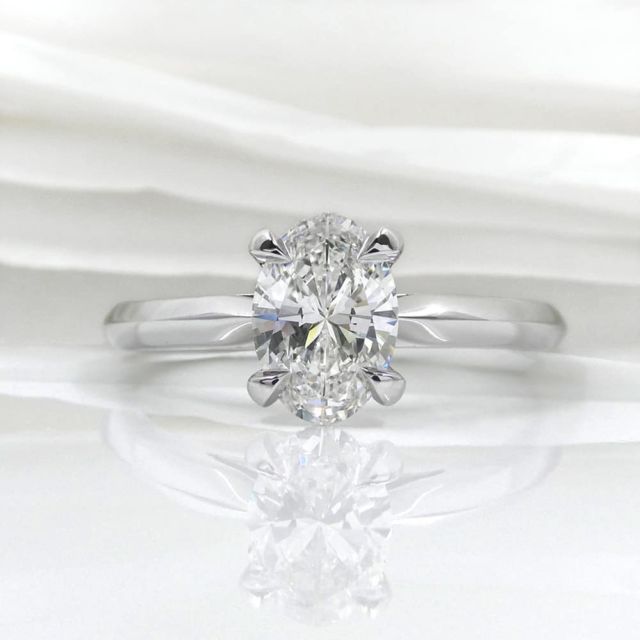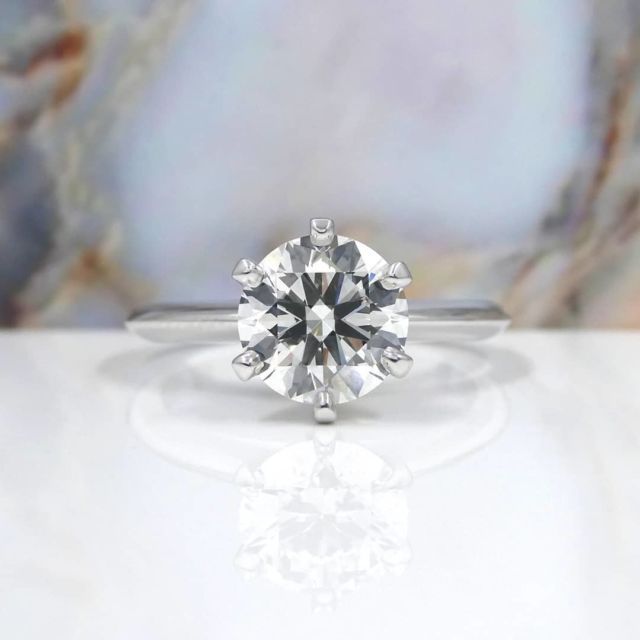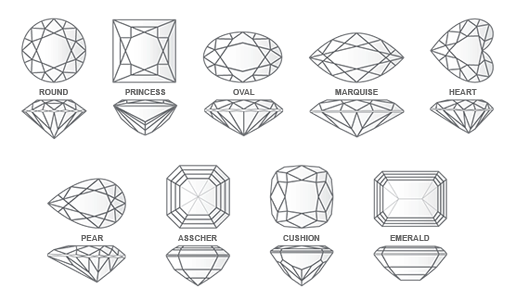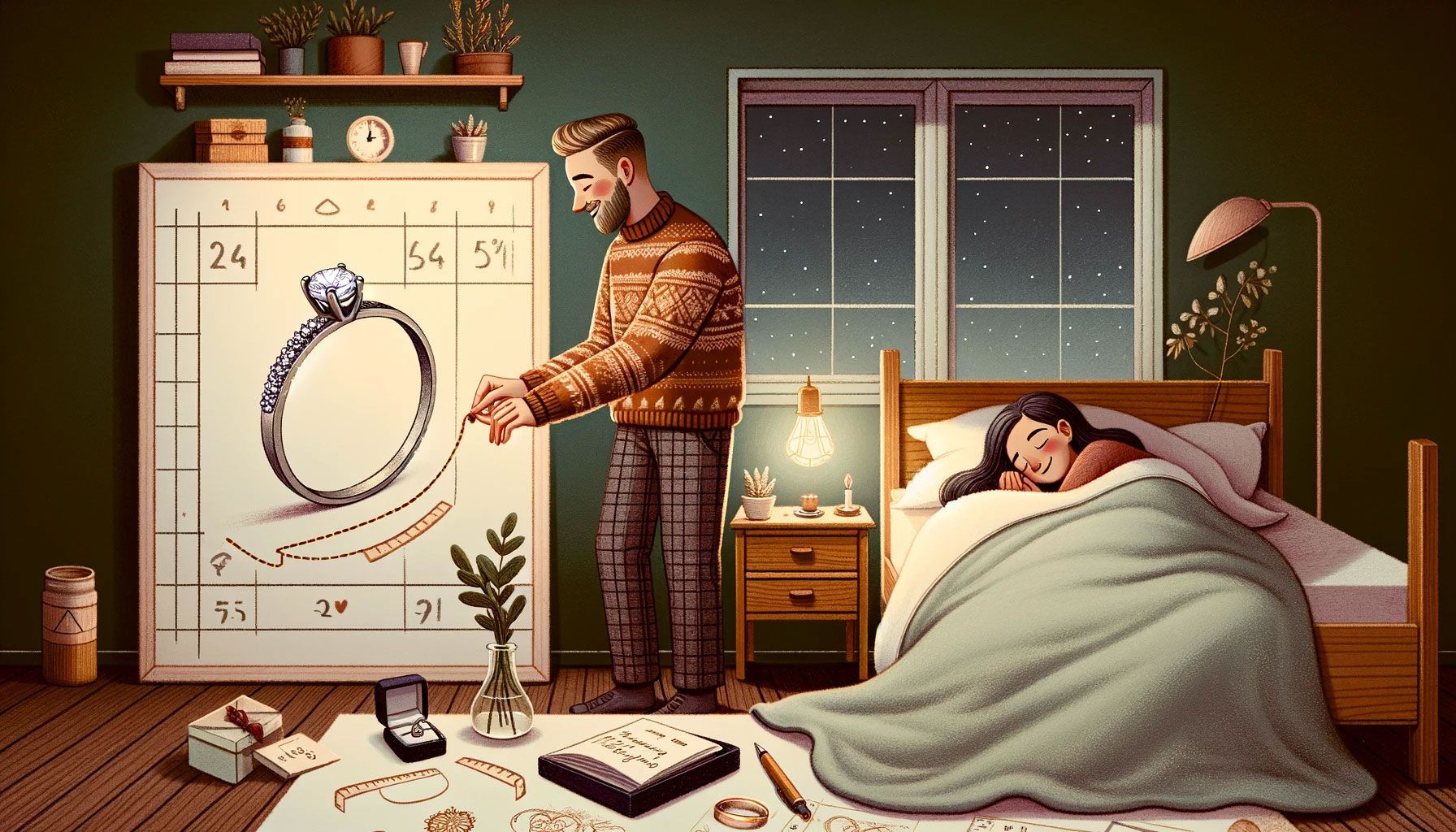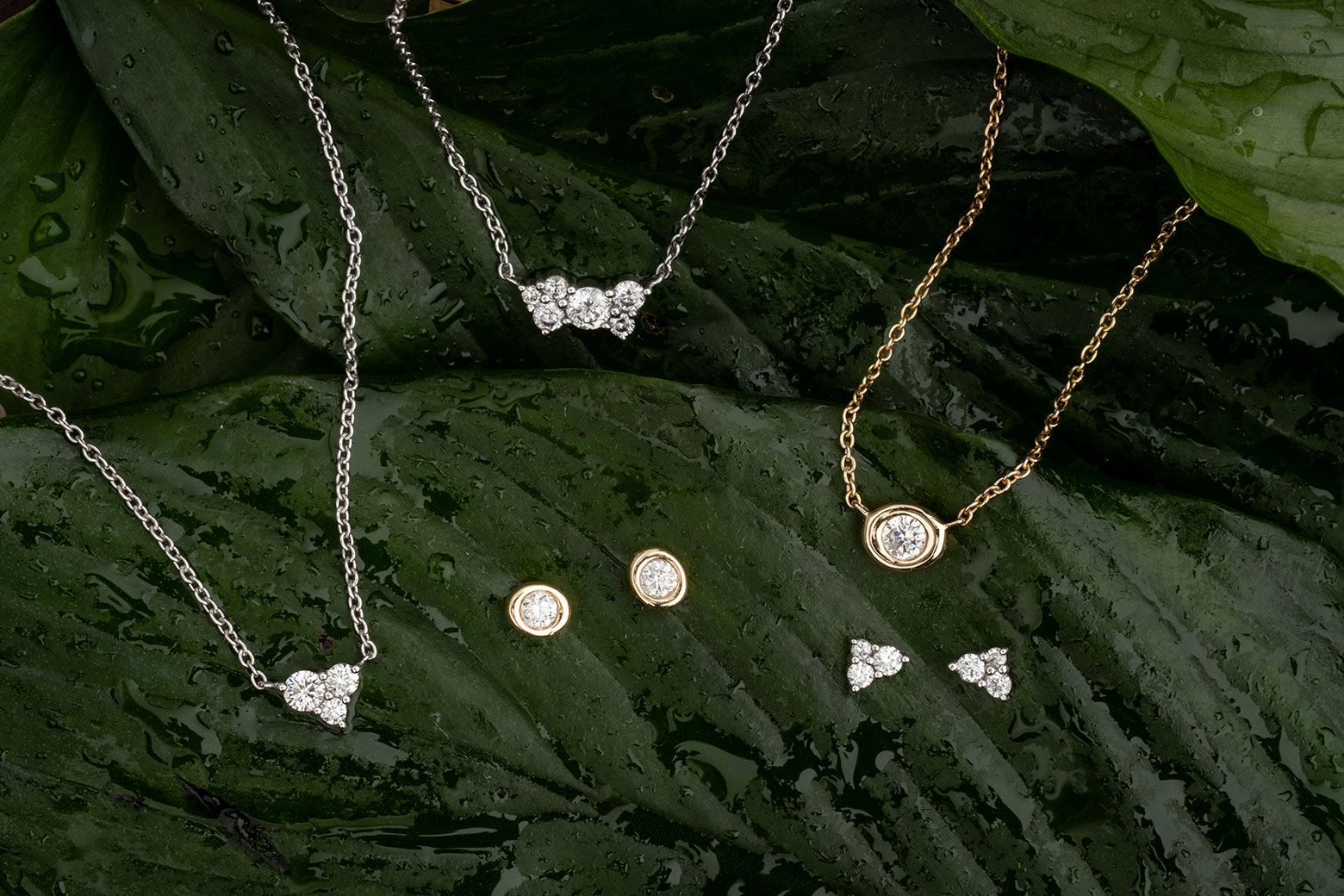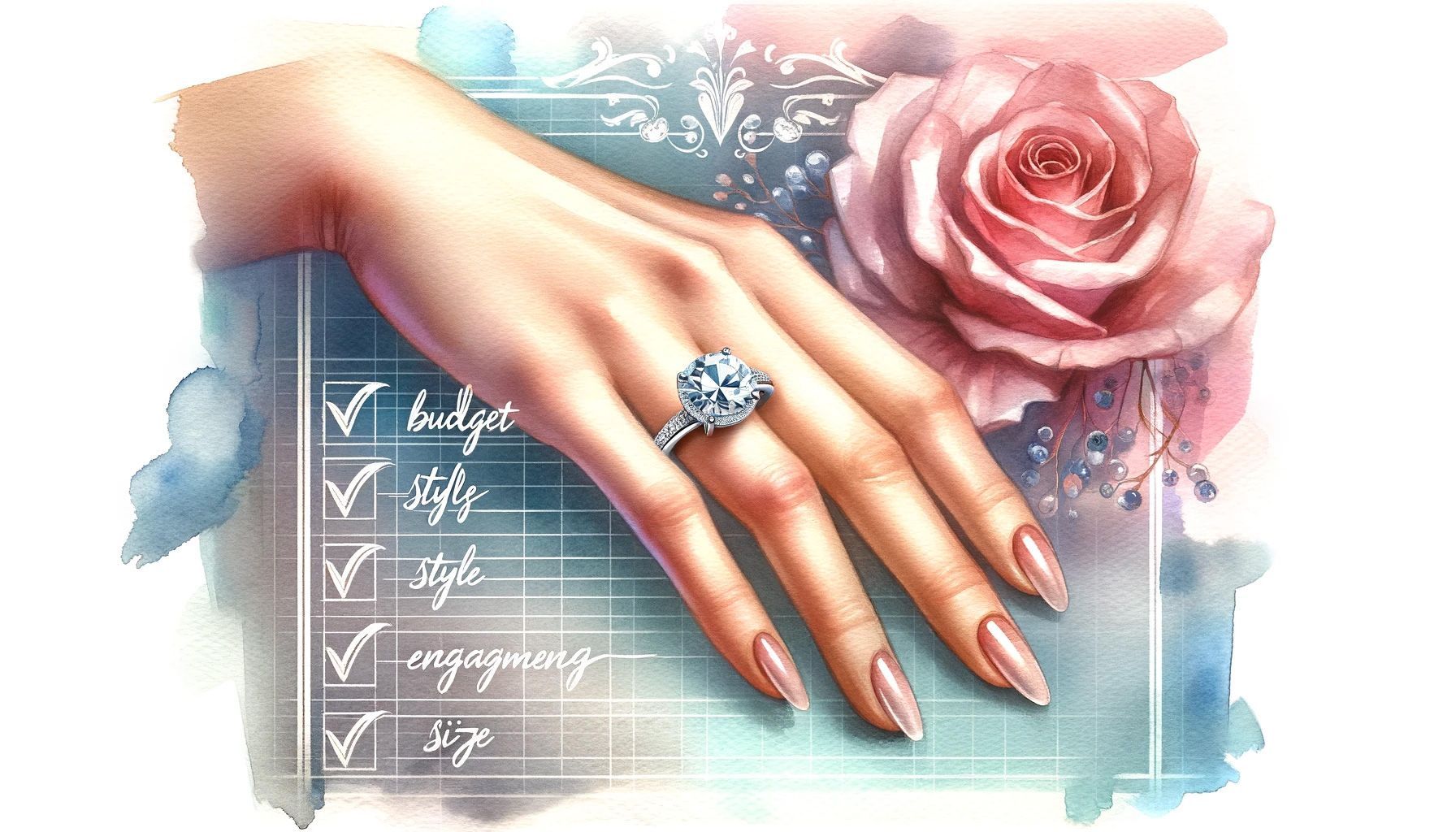
So you’re ready to spend the rest of your life with one special person. Congratulations! As someone who has popped the question, I know how exciting this time is. I also know how overwhelming it can be. Planning for the future, finding that perfect ring, figuring out what you’re going to do tomorrow… it adds up. Mostly, though, it’s exciting. And there’s no reason why finding an engagement ring should be anything other than that. I have a passion for diamonds. My specialty is helping a client find the perfect diamond and a beautiful ring to match. If you’ve had the chance to visit us at Kimberfire then you know that, above all, we appreciate the importance of selecting the best and brightest diamond possible – while being mindful of your budget and priorities. No couple needs unnecessary financial stress at any time, especially as they start their lives together. With that in mind, here are our top three tips for buying an engagement ring. Know your budget and stick to it. Whether you’re a seasoned executive or just recently finished school, only you know what you can afford to spend on an engagement ring. While this is an important purchase, nothing should come in the way of your financial security. Decide what you can comfortably spend and stick with it. An expert in the field can help you get the most out of your budget without sacrificing quality. Figuring out an appropriate budget can be challenging, so do not hesitate to contact a jeweler you trust to discuss your options. Should you spend three months’ salary? Often no… but maybe. It depends. An engagement ring is a deeply personal gift representing much more than the amount paid. Stretching for a certain size or clarity may or may not be the right choice for you. However, if you or your partner have certain expectations, it may be worthwhile to consider a savings plan to get you there. We have created beautiful diamond rings for $2,000 for recent college graduates, to rings valued in the six figures for couples with years and stories behind them. I can assure you that you will be able to do well by your partner, no matter your financial ability. Important side note – after working to save for such a valuable purchase, please remember to insure the ring immediately and at its full replacement value. This is a piece of jewelry that will be worn constantly (we hope!), and you want to make sure you are fully covered for loss and theft. Maximize the visual appeal of the diamond. When advising clients, our objective is usually to maximize the size of the diamond within a set budget or to minimize the price for a specific diamond size, in each case, without going below certain quality thresholds. Accomplishing this comes down to finding a balance between the main diamond-grading criteria – commonly known as the 4 Cs: Carat, Cut, Clarity, and Colour. Carat is the weight of the diamond, which is directly related to its size. Maximizing the size of the stone is the main priority for most of our clients, but never at the expense of quality. Cut is a measure of the shape of the diamond – specifically, how it compares to ideal proportions. A better cut maximizes the diamond’s brilliance, giving it that sought-after sparkle. We recommend keeping to “very good” or “excellent” cut diamonds. The brilliance of a well-cut diamond is what makes these stones so special and, because of that, we would never suggest that you sacrifice on cut. Clarity is a measure of how clean the diamond is. Most diamonds have one or more inclusions (imperfections), some of which are visible to the naked eye. Finding a brilliant diamond with a small, non-visible inclusion is often possible. For that reason, we usually work with clients to find diamonds graded “SI” (slightly included) or “VS” (very slightly included). Generally, diamonds above this range (“VVS” – very very slightly included, and “IF” – internally flawless) are more expensive and require a sacrifice in size for a clarity difference that is not visible to the naked eye. On the other hand, a diamond graded lower than “SI” clarity will most likely have visible imperfections. Any size gained by going below this range isn’t worth it, as it rarely leads to a brilliant stone. Regardless of the clarity grade, evaluating the diamond with an expert you trust is essential. Colour is a measure of how colourless the diamond is (the highest being D, then E, and so forth). Diamonds at the highest end of the colour scale sell at a premium, meaning you will have to sacrifice significantly on size or clarity to keep to your budget. On the other hand, venturing too low on the colour scale will leave you with an off-colour stone. We recommend the “F” to “I” colour range for a good breadth of selection, and to maximize the size of your diamond, while keeping to one that is sure to face up a brilliant white. The grade is only as good as the grader. Any diamond you buy should have a certificate that, amongst other things, grades the stone on the 4 Cs. Unfortunately, while there are many different diamond certification laboratories, only a few are known to have consistent, strict, and ethical standards. Purchasing a diamond graded by even the most stringent lab doesn’t mean you should skip a diligent evaluation. However, buying a diamond graded by a lenient lab can be as risky as blindly picking one from a hat. The only two labs we trust and recommend for natural, earth-mined diamonds are the Gemological Institute of America (“GIA”), which developed the current industry standards, and the American Gem Society (“AGS”). Both of these labs are non-profits with reputations for being consistent and ethical in their evaluations. We accept International Gemological Institute (“IGI”) reports for lab-grown diamonds, as most are sent there for evaluation. Ready? Are you still excited? Good, you should be! As a final bit of advice, make sure to find a jeweler that you trust. Of course, we would love to work with you on this big purchase and help you get the next chapter of your life started right. Kimberfire is the brilliant way to buy a custom engagement ring and high-quality diamond jewelry . A technology-driven approach to sourcing diamonds directly from the manufacturer, custom jewelry manufacturing , and non-retail office space allows for the most competitive pricing, with the expertise, craftsmanship, and in-person experience of the highest-end jewelry brands. Contact us today to get started!
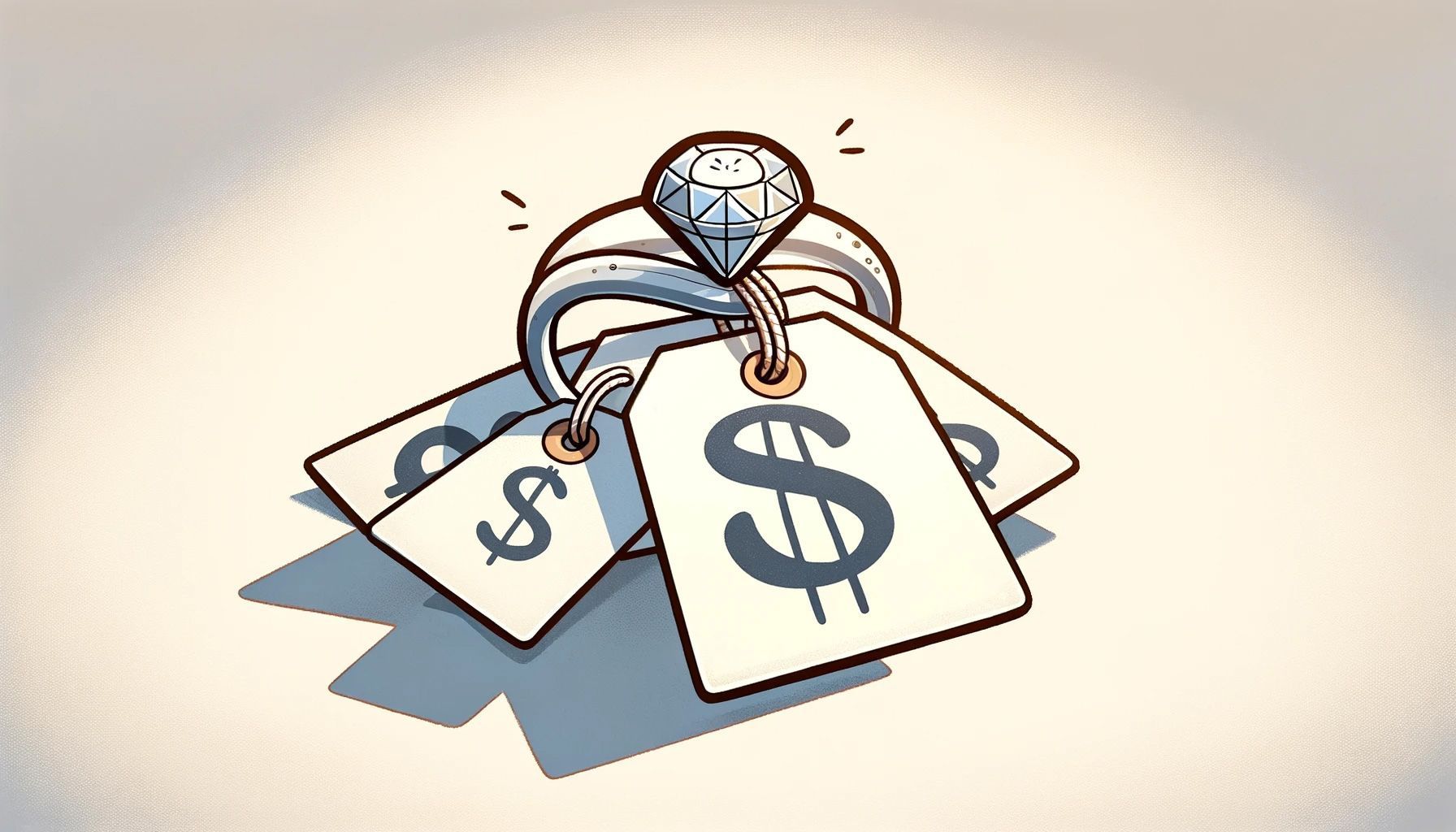
Are you ready to ask the love of your life for their hand in marriage? Are you holding off until you can afford the perfect diamond engagement ring ? Are you looking to design a custom engagement ring ? When the time comes to start your search, you’ll soon realize there’s no shortage of options. And that’s especially true if you’re open to a custom ring. There’s no one-size-fits-all answer to the question of how much a custom engagement ring costs. There’s no set price, and in many ways, it comes down to one detail: your budget. For example, if you’re on a tight budget, you can keep it simple with a smaller — yet stunning — centre stone and no extra diamonds. However, if you have the available budget, you can build a more extravagant engagement ring. That’s the beauty of a custom engagement ring. You’re paying a price you can afford for a ring that’s sure to knock your partner off their feet. Is it Expensive to Have an Engagement Ring Custom Made? The word “expensive” means something different to everyone, so it’s important to define your budget before shopping for an engagement ring (custom or not). Where you’re purchasing the ring has a lot to do with the cost, but in some instances, you may find that a custom ring is more affordable than one that you choose off the shelf. Imagine that! With Kimberfire, our clients get all the benefits of a one-off custom engagement ring designed just for them. Along with this, it’s our mission to provide the same quality and service as top brands in the industry, all at a fraction of the price. What Are the Benefits of a Custom Engagement Ring? The primary benefit of a custom engagement ring is obvious. You get exactly what you want in regards to design without having to make any compromises. This is in addition to other benefits, including but not limited to: Allocate budget toward what’s most important to you: Maybe you’re okay with forgoing side diamonds so you can put more budget toward a higher quality centre stone. Or perhaps you’re interested in a platinum ring, as opposed to gold. With a custom engagement ring, you can put every dollar where you want it. You don’t have to make concessions. Fun and memorable experience: Anyone can walk into a jewelry store, choose something off the shelf, and make a purchase. And it’s even easier if you buy a “stock” ring online. But with a custom engagement ring, you bring excitement to the process. Not to mention the fact that it’s an experience you’ll remember forever. The ability to match exact centre diamond measurements: You want a ring that fits your specific centre diamond measurements. “Close enough” isn’t good enough when it comes to an engagement ring. This is especially important for certain engagement ring styles, such as halo, with most people interested in a perfect fitting stone with no gaps. Let’s put it this way: If you can dream it up, you can design it. There’s no limit as to what you can do with a custom engagement ring. Final Thoughts Don’t let any myths or misconceptions hold you back from designing a custom engagement ring. Now that you better understand price and benefits, you can decide if it’s time to go down this path. And if it is, you’re in the right place. At Kimberfire, we manufacture custom engagement rings to ensure that you get what you want at a price you can afford. From the initial consultation to final delivery, we’re here to show you the way.
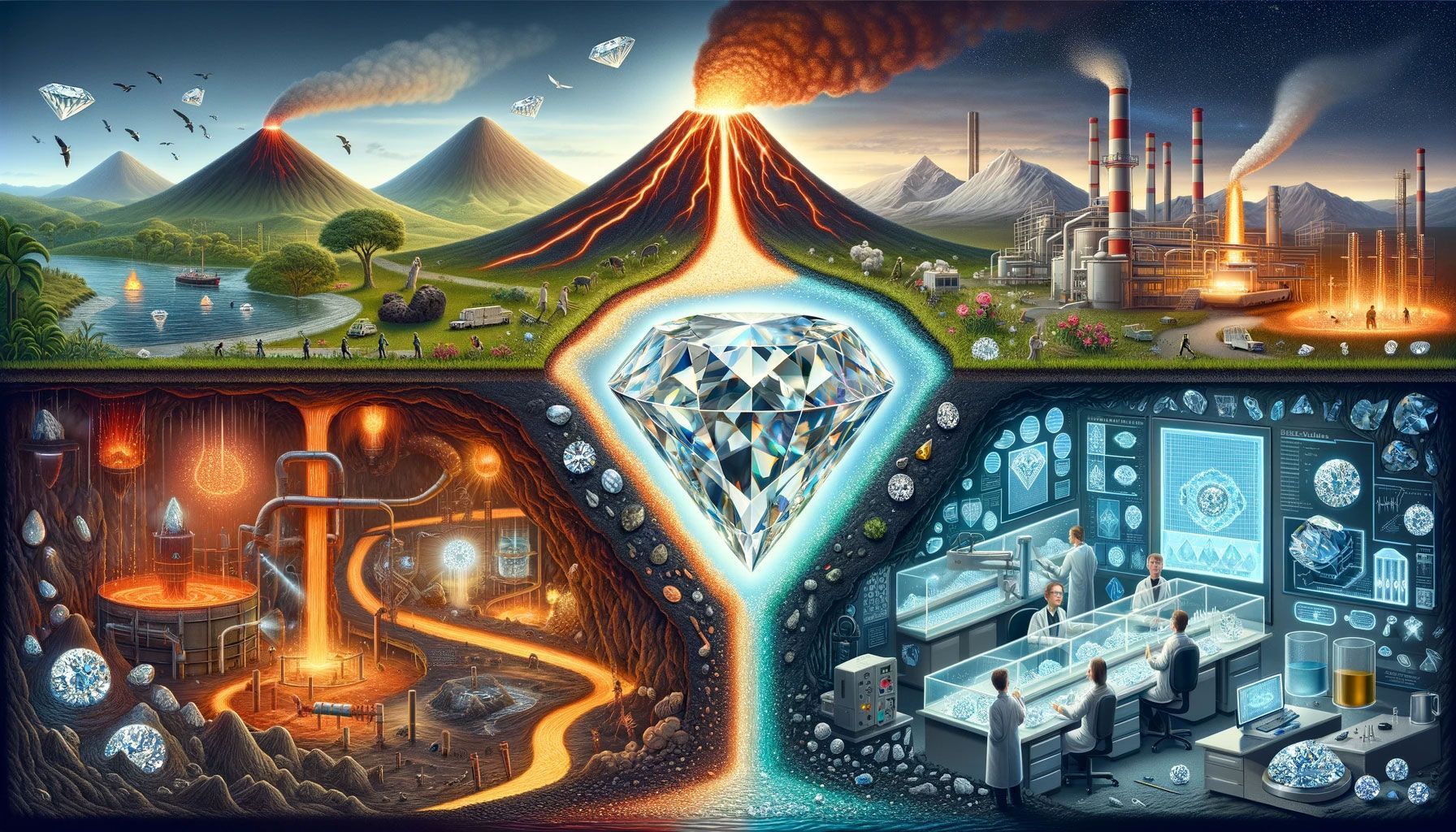
Nobody has to tell you that diamonds are unique. That’s just one of the many reasons why they’re so special. While natural diamonds have long been coveted for their value and beauty, there’s a new “product” in town. Lab-grown diamonds are exactly what they sound like. Rather than being mined from the earth, they’re grown in a lab. With the global market value of lab-grown diamonds on the rise, it’s more important than ever to understand the differences, misconceptions, and options as a consumer. The Differences Between Natural and Lab-Grown Diamonds At first glance — especially if you don’t know any better — you may assume that natural and lab-grown diamonds are one and the same. However, as you learn more, you’ll come to find that there are a variety of differences. Let’s start with the main one: Natural diamonds occur in nature. They’re also very rare. You won’t find these just anywhere in the world. This is in contrast to lab-grown diamonds that are made in a factory. They’re only limited by production capacity, which has resulted in a large number of them making their way to market over a relatively short period of time. As technology improves, lab-grown diamonds become cheaper to produce. Subsequently, prices continue to drop. Add this to the fact that lab-grown diamonds are flooding the market, and it’s easy to see why consumers are taking notice. Here’s the bottom line: Even though natural and lab-grown diamonds are the same material and composition, there’s no replacement for those that are found in nature. Rarity will always win out over mass production. Lab-Grown Diamonds: Common Misconceptions There are many myths and misconceptions associated with lab-grown diamonds, especially when compared to their natural counterparts. The most common misconception is that lab-grown diamonds are identical to natural diamonds. This isn’t true no matter how you look at it. One comes from the ground, while the other is produced in a factory. There’s also the myth that lab-grown diamonds don’t have a carbon footprint. While it’s true that traditionally mined diamonds produce carbon, lab-grown diamonds don’t entirely eliminate this. There are two ways to grow a diamond, both of which produce carbon: High pressure, high-temperature (HPHT) Chemical vapor deposition (CVD) It’s true that there’s a smaller carbon footprint for lab-grown diamonds, but it still exists. Natural Diamonds Do Good We all know that natural diamonds are unique, beautiful, rare, and so much more. But that’s just the start. There’s a not-for-profit organization — Diamonds Do Good — “whose mission is supporting programs that develop and empower people in natural diamond communities and sharing these stories of positive impact.” Consider the following: The diamond industry employs millions of people throughout the world. The diamond industry serves as a pillar to many economies. There’s even a film that details how Botswana benefits from the diamond industry. How to Tell the Difference To the naked eye, there’s no difference between natural and lab-grown diamonds. They look exactly the same. But that doesn’t mean that they are. An experienced gemologist can tell the difference between the two. They do this by searching for the presence of nitrogen, which is found in natural diamonds but not lab diamonds. Also, many lab diamonds have unique fluorescence and/or a laser inscription, which are telltale signs that they did not come from the ground. If you have questions or concerns about a diamond you own or a diamond you want to purchase, consult with a professional gemologist. It won’t take them long to examine your diamond and explain its origins. Final Verdict Despite the recent growth in lab-grown options, natural diamonds remain the king of the industry. While natural diamonds hold their value — or increase over time — lab-grown diamonds continue to experience significant price declines. For now, people are buying lab-grown diamonds for everything from fashion jewelry to engagement rings. However, as prices continue to drop, there’s a strong possibility that these diamonds will be associated primarily with lower-priced fashion jewelry and related items. Simply put, there’s no replacement for a natural diamond. And that’s why (natural) diamonds are a girl’s (or guy’s) best friend! That being said, there is nothing wrong with making an educated decision to buy a lab grown diamond, while knowing all the facts! While we recommend natural diamonds, if you still feel a lab grown diamond is right for you then we’ll be able to provide a beautiful and well priced selection – and we’ll make a stunning piece of jewelry with your chosen diamond. We’re always happy to help with your decision, and we’re here to answer any questions and support you in any way we can.
About Kimberfire
Your Personal Jewelry Experience™
A brilliant way to buy high-quality custom engagement rings, diamonds, and jewelry. Discover expert guidance, complete transparency, and unmatched value in Toronto and across Canada.


